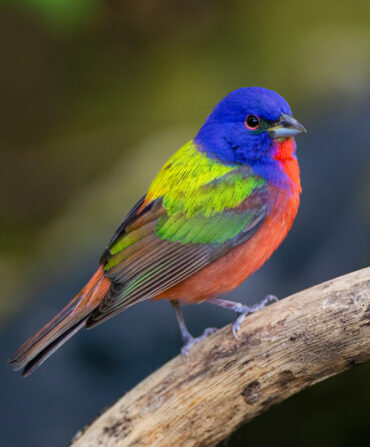On its way from Springer Mountain, Georgia, to Mount Katahdin, Maine, half of the Appalachian Trail’s 2,200-mile length winds (and winds and winds) through six Southern states. The Green Tunnel, a podcast produced by students at George Mason University, aims to preserve the considerable history generated by the AT since its completion in 1937. Many non-historians apparently also are tuning in, propelling The Green Tunnel into the top 3 percent of podcasts nationwide. We asked the host, professor Mills Kelly, to pull some of the more intriguing anecdotes and observations from the show from his overstuffed backpack.

The Crappalachian Trail
More than three million people hike some portion of the AT each year—and they have to poop somewhere. “The originators of the trail were worried that no one would use it, so they purposely built shelters with privies to make the AT seem more accessible to the average person,” Kelly says. “These privies started as basic pits in the ground but over the decades have been the site of significant ecological engineering. In the 1970s, a guy came up with the composting-toilet privy that’s more ecologically friendly, is easier to maintain, and smells better. They’re common now, and the first one was on the AT.” That doesn’t mean that all 260 rustic rest stops are the same. Indeed, photographer Sarah Jones Decker has created a “Crappalachian Trail” poster that captures 132 AT privies in all their outhouse-like glory.
The South Is Where Thru-Hiker Dreams Go to Die
“So many people have this fantasy of hiking the trail, but lots of them have virtually no hiking experience,” Kelly says. “If they’re traveling northbound, which almost everybody does, they start at Springer Mountain in early spring when it’s still quite cold, with thirty-pound packs on their backs. That first section through the mountains of Georgia is the great sorting out. At the forty-mile point, they arrive at a backpacking store called Mountain Crossings at Neel Gap. There’s a highway there, and shuttle drivers who know that hikers are going to give up and need to hire a ride to the Atlanta airport are waiting. For hikers who make it past that point, the biggest test is boredom. It’s all very exciting at first, but after a few days it’s just oatmeal for breakfast, hike fifteen miles, go to sleep, then oatmeal for breakfast again. By the time they get to Harpers Ferry, West Virginia, they start thinking this is dumb and catch a train to D.C.
Trail Confessions
“Shelters along the trail have log books so that hikers can report trail conditions and leave messages for other hikers,” Kelly says. “At the Priest Shelter at the summit of Priest Mountain in Nelson County, Virginia, it has also become common for people to confess their sins. They confess things like having just shoplifted two Snickers bars at Walmart, or messing around with a roommate’s boyfriend. It’s just one of those odd AT traditions.”
The Half-Gallon Challenge
“In 1980, a camp store manager at Pine Grove Furnace State Park in Pennsylvania came up with the idea that AT thru-hikers should reward themselves for making it halfway by eating a half-gallon of ice cream,” Kelly says. “Since then, the ‘Half-Gallon Challenge’ has become a major tradition. The problem is that they’ve hiked 1,100 miles existing on ramen and protein bars, and then they eat a half-gallon of butter fat, and it’s freezing cold to boot. So they turn green.” Adverse effects are common enough that some experienced hands advise partakers to take an extra day off to let all that lactose run its course. Regardless, the tradition lives on, as evidenced by a freezer kept stocked with half-gallons of Hershey’s ice cream. The prize? A tiny wooden spoon stamped with “Member of Half Gal. Club.”
Minimalist (and Naked) Hiking
From ergonomic backpacks to top-dollar boots to moisture-wicking everything, hiking gear has become quite high-tech. But not every hiker needs or wants such advancements. “If someone can name one thru-hiker, it’s Grandma Emma Gatewood, a sweet lady who hiked the AT solo in 1955 at the age of sixty-seven,” Kelly says. “She wore canvas Keds and didn’t even have a backpack, just a sack made out of denim skirt.” Some folks take trail minimalism to even greater extremes, especially on National Naked Hiking Day, an actual thing that falls on June 21, the summer solstice. “In the first book published by a thru-hiker, Edward Garvey mentions that he ran into a whole group of naked hikers, but, you know, that was in the hippie days of 1971,” Kelly says. “I’ve personally never spotted a naked hiker, but if you’re on the trail on Naked Hiking Day, the odds are at least fair.”








